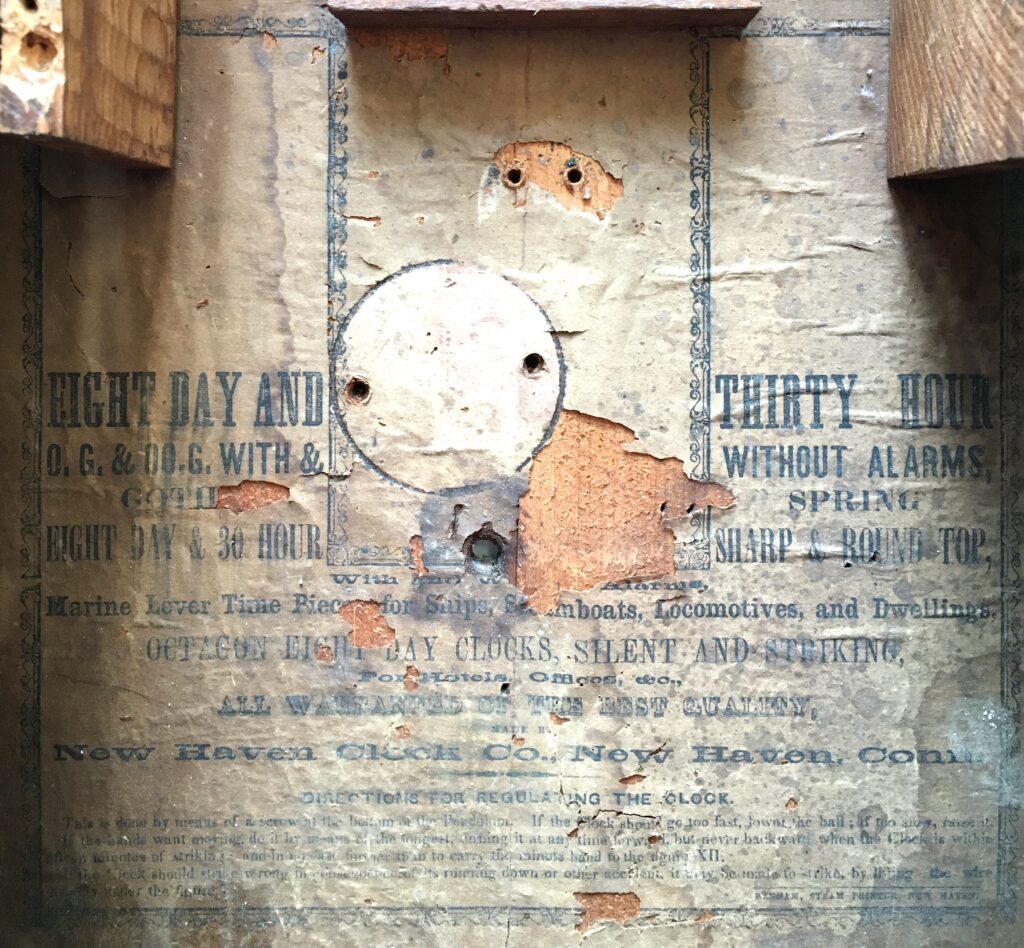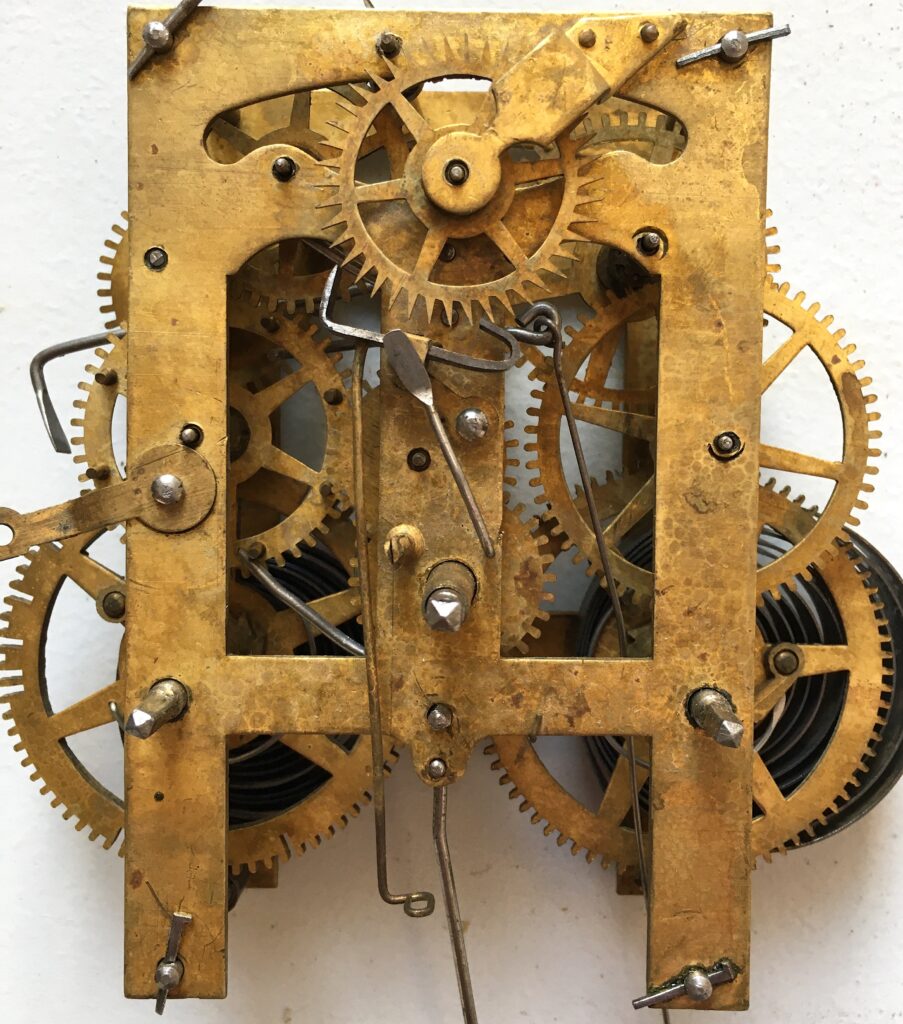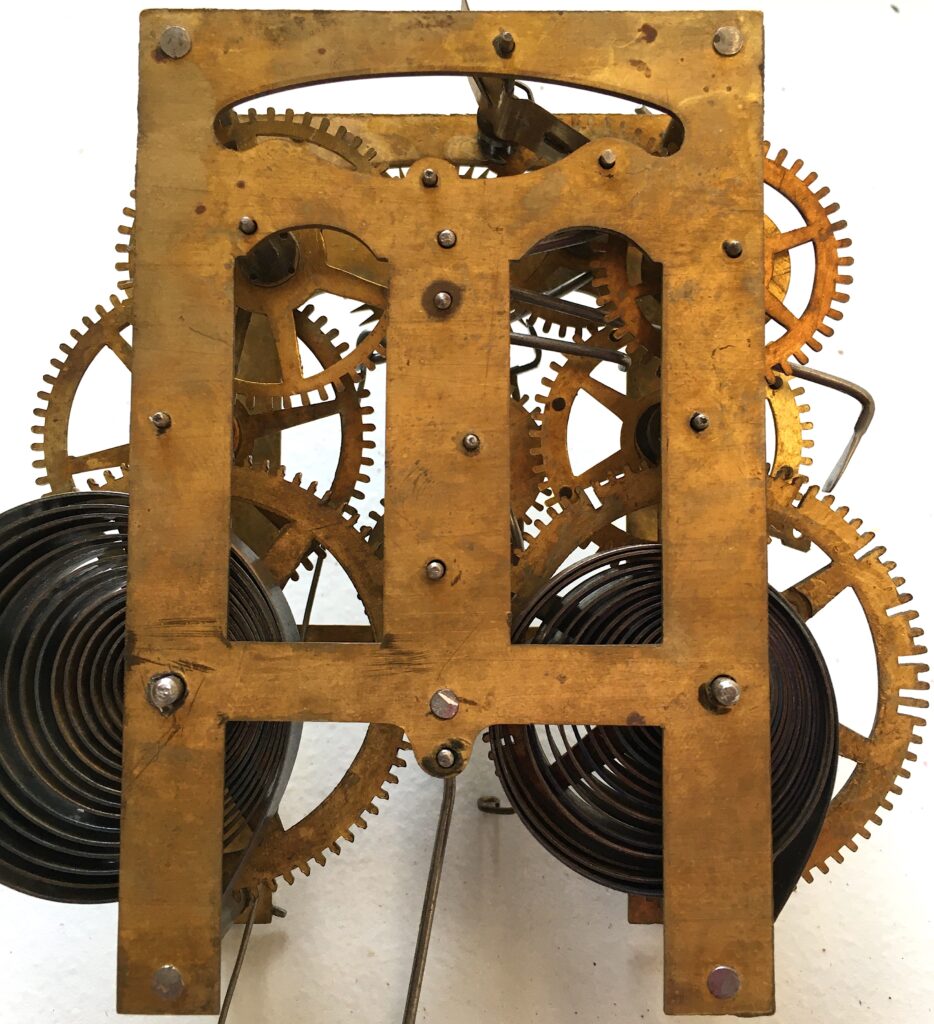This mini ogee (or more properly, double ogee) likely dates to the late 1850s, though dating clocks from this period is not an exact science. Ogee refers to the style of case that has a convex-concave (S-curve) front. An ogee has flat molding around the door frame and the outer edge of the case, whereas a double ogee (OOG) has concave molding around the door frame and convex molding around the edge of the case. Apologies for the reflection of my pink sweatshirt in the tablet.
The label is similar (but not identical) to ones found in many Jerome shelf clocks from the 1850s and almost identical to the one in the New Haven column & cornice (see below for the difference).
The only difference I can see between this label and the one in the New Haven column & cornice is that the printer’s line does not contain a typo in the word “steam”: “BENHAM, STEAM PRINTER, NEW HAVEN”. Benham referred to his business as a “steam printer” in various city directories from 1849 through at least 1862.
30-hr, spring-driven movement made by the New Haven Clock Co. This was a standard movement used in late Jerome and New Haven clocks extending at least into the 1870s. Versions made after approximately 1870 have a tapered escape wheel bridge. Aside from the shape of the escape wheel bridge, New Haven apparently made no changes in this movement over the course of 20 or more years.
Rear view of movement.




